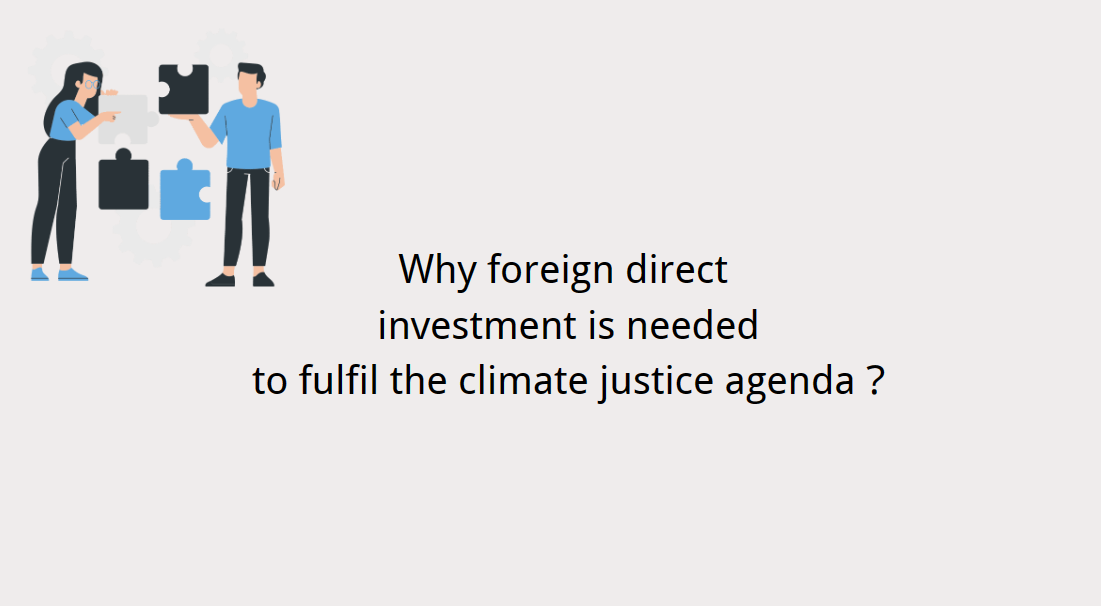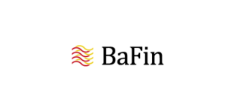Rising inflation: for the time being, it's here to stay
Initial estimates from the European Central Bank (ECB) place inflation for November 2022 at around 10%. For the coming year, the ECB projects average inflation for the euro of 5.5%, which is almost triple the ECB’s medium-term target of 2%. Various factors also indicate that inflation might remain at a higher level in the longer term: in particular, above the ECB’s inflation target. These factors include deglobalisation, as well as demographic change leading, potentially, to a systematic decline in the working population and thus consistently rising wages. Insurers should therefore be prepared for high inflation for the foreseeable future and monitor dynamic trends in inflation.
BaFin accompanies insurance undertakings through this process and discusses the adaptations that need to be made in supervisory interviews, communication with auditors and on-site inspections.
Claims inflation more and more important for insurers
The current, and potentially long-lasting, high inflation has a particular impact on property and casualty insurance. It has been shown in the past (see the box entitled “claims inflation”) that claims inflation has tended to lie above consumer price index inflation for certain key lines of business. For example, the construction price index, an index that is relevant in homeowners insurance, has risen by an average of almost 3.5% per year in the last 15 years1. For the past seven years, the average annual increase has been almost 4.5%. This year, the construction price index rose by approximately 15%, a greater increase than at any time in the past 50 years. In the longer term, liability claims have risen more than monetary inflation. These figures highlight one thing in particular: claims inflation is not a new issue for property and casualty insurers, but it is one that is becoming more and more significant.
The rising, long-term high claims inflation affects all types of property and casualty insurance. However, the expected consequences vary. It is clear that a considerable rise in claims incurred can be expected for insurance types that have a longer settlement period and in which the insurer is to pay for damage to actual property, or where new for old cover has been agreed.
The key factor that drives claims inflation is the price of goods and services in connection with the settlement of potential insured claims. More specifically, claims inflation can be defined as a change in claims incurred due to inflation for a particular insurance portfolio over a specified period, usually one year. Claims inflation is significantly affected not just by increases in, for example, the prices of materials or repair work, but also by wage increases (e.g. for loss adjusters), the costs of medical care due to medical advancements, which are particularly relevant for personal injuries, and changes in judicial decisions.
Suitable measures to counteract rising claims inflation
When they are pricing their insurance products, in particular, property and casualty insurers need to take into account claims development trends with regard to expected claims. Adapting reserves due to inflation necessarily means that the adequacy of premiums needs to be reviewed. This applies both to existing business and to new business. As inflation affects different lines of business to a different degree, the changes that need to be made depend on the extent to which each individual segment is affected. This means that there cannot be a single adjustment rate to be applied to all insurance business or across an entire segment such as property and casualty insurance. Moreover, insurance undertakings will need to carefully analyse and take into account the previous results of operations in the individual segments. In many cases, however, insurers will not be able to avoid significantly increasing premiums to make sure that they do not slip into the red. BaFin would like to make clear that when underpricings arise, insurance undertakings need to examine, in accordance with the HGB, whether a provision for impending losses from insurance business needs to be set up such that projected losses are included in the accounts from an early stage.
As well as adapting premiums, insurers also need to assess whether further measures can be taken to proactively counteract the adverse effects of rising, long-term claims inflation. Potential measures might include adapting the reinsurance strategy, making contractual changes such as amending the sum insured or using capital investments to hedge against inflation risks.
Solvency II: inflation is to be taken into account explicitly and adequately
For the calculation of technical provisions under Solvency II, it is set out clearly in section 84 (1) number 2 of the German Insurance Supervision Act (Versicherungsaufsichtsgesetz – VAG) and in the Delegated Regulation itself that inflation is to be taken into account explicitly and adequately.
Rising claims incurred usually lead to an increase in technical provisions. For the upcoming annual financial statements, BaFin expects insurance undertakings to closely examine the consequences of high claims inflation and, in particular, the recent rise in inflation on their technical provisions and the solvency situation under Solvency II. Adequately taking claims inflation into account is particularly important for the calculation of the best estimate for claims provisions.
Under Solvency II, own funds are – put simply – the difference between assets and liabilities.
An insurance undertaking’s liabilities primarily consist of technical provisions. Under Solvency II, these are usually the sum of a best estimate and a risk margin.
The best estimate is the sum of all future probability-weighted and discounted cash flows to which the insurance undertaking is exposed, estimated using realistic assumptions. In non-life insurance the best estimate is based on the premium provision and the claims provisions.
The claims provisions account for insured events that have already occurred but for which the claims have not yet been settled by the insurer (outstanding claims provisions). The premium provision accounts for future insured events resulting from the insurance portfolio on the balance sheet date.
The risk margin corresponds to the risk premium that a professional investor would require in order take over and run off the insurance portfolio.
External data are becoming more important
Alongside the internal data that are usually used to determine the best estimate for claims provisions, the importance of appropriate external macroeconomic data for measuring claims inflation and deriving suitable inflation assumptions has increased greatly. For example, suitable inflation indices can be used to produce an approximate estimate for claims inflation in a specific type of insurance. Claims inflation in homeowners insurance, for instance, could be approximately determined using the construction price index mentioned above, the harmonised index of consumer prices (HICP) for health could be used for personal injury claims inflation, and the repair cost index (Reparaturkostenindex) could be used for motor vehicle claims inflation, to name just a few examples. However, to estimate the undertaking-specific claims inflation for a specific line of business, which is used in the calculation of the best estimate for claims provisions, the decisive factor is the interplay between the internal data and the external data. In particular, the observed trends in external inflation indices cannot be sweepingly carried across 1:1 as an assumption for claims inflation. Instead, the representativeness of the index for the insurance undertaking’s own insurance portfolio needs to be checked and, if appropriate, adjusted based on a credible expert assessment. This should take into account the proportions of different types of claims at the specific insurance undertaking, among other aspects.
Claims inflation: close communication is important during reserving process
In the reserving process, close communication between different departments within insurance undertakings is becoming more and more important to ensure that claims inflation is appropriately represented in claims provisions under Solvency II. Of primary importance here is the interaction between actuaries working in reserving and the employees responsible for processing insurance claims, particularly in the clarification of questions regarding the extent to which inflation effects are already sufficiently taken into account in reserving for individual claims or regarding precisely when inflation effects are realised, e.g. at the time the claim is reported or only when it is paid out. Similarly, communication between the actuaries working in reserving and the actuaries working in pricing is also important, particularly if reserving procedures are employed that use premiums as a measure for exposure. The communication between actuaries working in reserving and the actuarial function should also be mentioned here.
Claims provisions must be based on appropriate assumptions for claims inflation
To systematically take into account claims inflation when calculating the best estimate for claims provisions, it makes sense to first identify and estimate the historical implicit inflation in the claims triangles. However, if claims inflation has risen considerably, it is not sufficient to simply extrapolate future cash flows based on this implicit historical inflation. Instead, future cash flows need to be adjusted as appropriate and, primarily, increased – in comparison with a low-inflation environment – in order to take into account the high claims inflation. The important aspect here is estimating the future undertaking-specific claims inflation for a specific line of business and deriving appropriate assumptions regarding this. In particular, assumptions about claims inflation should not be too optimistic. It is of primary importance that insurance undertakings do not assume a quick return to the level of claims inflation seen before 2022. This is the only way to ensure that the technical provisions can be assessed prudently and reliably using realistic assumptions (section 75 (1) of the VAG and section 77 (2) of the VAG). In BaFin’s view, appropriately taking into account high claims inflation should lead to a significant increase in claims provisions in various lines of business.
Determining premium provisions: simplified methods need to be modified
Furthermore, rising claims inflation also needs to be taken into account in the calculation of the best estimate for premium provisions. The questions that need to be examined include the extent to which high inflation has an impact on lapse behaviour or on the behaviour of policyholders. In calculating the best estimate for premium provisions, many property and casualty insurers rely on the simplified method set out in Technical Annex III of the EIOPA Guidelines on the valuation of technical provisions. It is important to point out here that the assumptions on which this methodology is based, which assume, in particular, that the expected combined ratio will remain constant, do not hold in times of high claims inflation to a sufficient degree. Insurance undertakings therefore need to consider how they can modify the simplified method appropriately in order to take high claims inflation into account when calculating the premium provisions.
The increased level of uncertainty in determining the best estimate needs to be taken into account in the validation of technical provisions
Because of the significance of claims inflation to many property and casualty insurers, an in-depth examination of the topic in the longer term is also advisable. In measuring undertaking-specific claims inflation for a specific line of business, for example, it may be important to look more frequently at individual claims data from reported losses and to investigate inflation effects beyond the aggregated data in the claims triangles. As claims inflation increases, uncertainty in the calculation of technical provisions also increases. This is particularly true because, firstly, external data are used in the calculation and, secondly, because uncertain assumptions about future claims inflation have a greater influence on the amount of the technical provisions. This increased degree of uncertainty needs to be duly taken into account in the validation of the technical provisions.
Insurers must explain their specific inflation risks in detail in the ORSA
There is another aspect that is also important under Solvency II: the risks associated with long-term high inflation are not explicitly modelled in the Solvency II standard formula. Insurers therefore need to deal with the inflation risks specific to their undertaking in column II of the framework, i.e. in the Own Risk and Solvency Assessment (ORSA). In BaFin’s view, it is important that insurers consider multi-year scenarios that assume longer-term high inflation when determining their overall solvency needs. Furthermore, the ORSA should include a closer analysis of the premium and reserve risk when the insurance undertaking assesses how its own risk profile differs from the assumptions on which the standard formula is based. Due to high claims inflation, the insurance undertaking’s own premium and reserve risk in certain types of insurance can be underestimated when the standard formula is used.
The relevant narrative reports are to explain how the high claims inflation has been taken into account under Solvency II in a manner appropriate for the target audience. In particular, BaFin expects the RSR report (Article 310(1) of the Delegated Regulation) to contain a detailed explanation of the methodological approach taken and the assumptions used to calculate the technical provisions.
The prudence principle under the German Commercial Code (Handelsgesetzbuch – HGB) needs to be applied – future run-off losses are to be avoided.
With regard to how inflation is taken into account in accounting under the HGB (see box entitled “Important provisions for the calculation of technical provisions under the HGB”) this means, first of all, that any inflation in the prices of goods and services that occurs up to the balance sheet date is always to be taken into account in the calculation of technical provisions.
In terms of price increases that are expected after the balance sheet date, we refer first of all to the provision set out under section 341e (1) sentence 1 of the HGB, which highlights the requirement for obligations arising under insurance policies to be able to be met at all times, thereby emphasising a particular principle of prudence for insurance business. It can be inferred in the context of the provisions referred to above that insurers need to examine whether the valuation reserves, which are usually formed on the basis of the principle of individual valuation, are sufficient to avoid future run-off losses. The amount of the valuation reserves needs to adhere to the principle of accounting consistency (section 252 (1) no. 6 of the HGB) and should therefore at least remain the same. Otherwise there would be a change in the valuation approaches. A drop in the security level must be avoided.
If run-off losses from case-by-case reserves cannot be avoided with sufficient certainty, insurance undertakings are also required to examine and document in a transparent way the extent to which a provision needs to be set up for impending losses on pending transactions (section 249 (1) of the HGB). Section 341 (2) no. 3 of the HGB is the special requirement for technical provisions that are to be set up for losses expected after the balance sheet date from contracts concluded before the end of the financial year (provision for impending losses from insurance business).
This is intended to ensure that insurance undertakings allocate premiums and benefits to the appropriate time period and make adequate provision for the settlement of claims that have already arisen, taking future inflation trends into account.
As part of its duty to ensure that insurers are able to meet their obligations under insurance contracts at all times and in particular that they have recognised adequate technical provisions (section 294 (4) of the VAG), BaFin will be observing whether insurance undertakings are dealing with high claims inflation appropriately.
In particular, BaFin expects insurers use the discretion available to them in the valuation process in accordance with the prudence principle such that they calculate sufficient claims reserves to prevent future run-off losses and ensure that they are able to meet their obligations under insurance contracts at all times. They may also need to set up a provision for impending losses.
Above all, the overriding principle is that of prudence under the German Commercial Code: under the general principles of valuation set out in section 252 of the HGB, paragraph 1 no. 4 states that valuations are to be performed prudently. All risks and losses that have arisen as per the balance sheet date are to be taken into account even if they have become known only in the period between the balance sheet date and the date on which the annual financial statements were drawn up. The central idea behind this principle, alongside capital conservation, is the protection of creditors. The insurance undertaking’s position should not be presented as being better than it is in reality.
The principle of individual valuation under section 252 (1) no. 3 of the HGB is also to be observed. Debt obligations and assets are to be valued individually as per balance sheet date. In property and casualty insurance, this is realised in insurance undertakings’ processing of claims and benefits through the calculation of individual claims reserves as soon as a policyholder or beneficiary reports a loss event. Alongside the provisions for reported, outstanding claims, insurance undertakings are also required to form a sub-provision for claims that have been incurred but not reported to the undertaking by the balance sheet date (IBNR claims). Article 341g (2) sentence 1 of the HGB sets out an exception from the principle of individual valuation for this sub-provision for IBNR claims: the sub-provision can instead be valued on a lump-sum basis using appropriate estimation methods.
Alongside the general requirements for accounting and the valuation of assets and liabilities, there are also further requirements that apply to insurance undertakings under the HGB (section 341 et seq. of the HGB). Of particular relevance here is section 341e (1) sentence 1 of the HGB: under this requirement, insurance undertakings are also to form technical provisions insofar as, exercising reasonable business judgment, this is deemed to be necessary in order to ensure that the obligations arising under insurance policies can be met at all times. This requirement is rooted in the prudence principle and puts the principle into more concrete terms for insurance undertakings (creditor protection, in this case for policyholders). It should also be taken into account that under section 341e (1) sentence 3 of the HGB, insurance undertakings’ provisions are to be valued in accordance with the values prevailing on the balance sheet date and are not to be discounted.
BaFin will monitor insurers’ approaches closely
High claims inflation has a considerable effect on property and casualty insurers, as significantly higher claims incurred are to be expected in various types of property and casualty insurance. Although dealing with claims inflation is nothing new for property and casualty insurers, the current very high level of inflation does have a new quality to it. Insurance undertakings need to review the assumptions for calculating technical provisions under Solvency II in particular, which can often lead to higher claims provisions. When calculating technical provisions under the HGB, they need to ensure that they avoid run-off losses as far as possible. When pricing their insurance products, they need to examine the extent to which higher premiums are required in response to higher claims inflation. BaFin will closely monitor insurance undertakings’ approaches to modelling claims inflation under the HGB and Solvency II.























































First, please LoginComment After ~